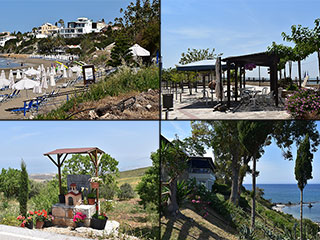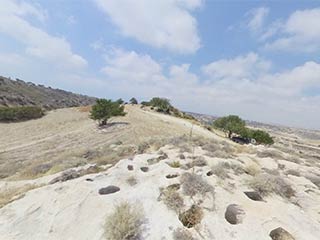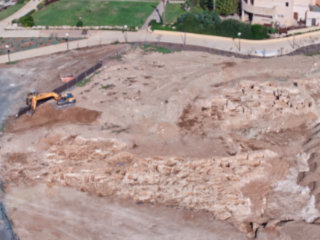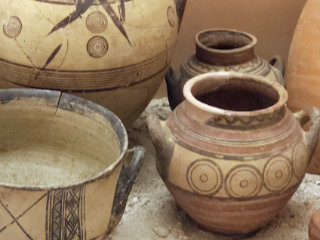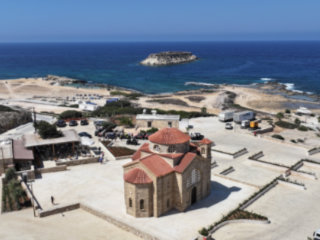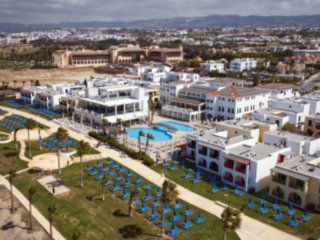Souskiou Cemetery
View from the Cemetery.
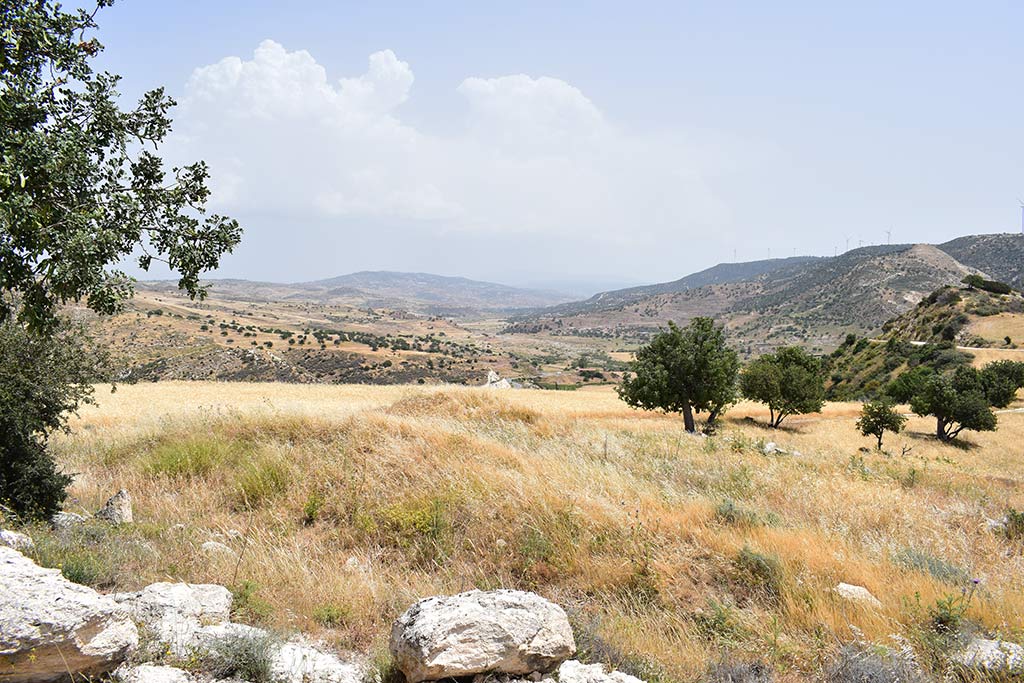
I wonder what the view would have looked like back in the day?
And in case you were wondering, "the day" would have been around 3000 BC. I found this quote about the cemetery from the official website:
It seems likely that visibility both to and from the cemetery was a factor in choice of location for the Chalcolithic peoples.

5000 Years Old
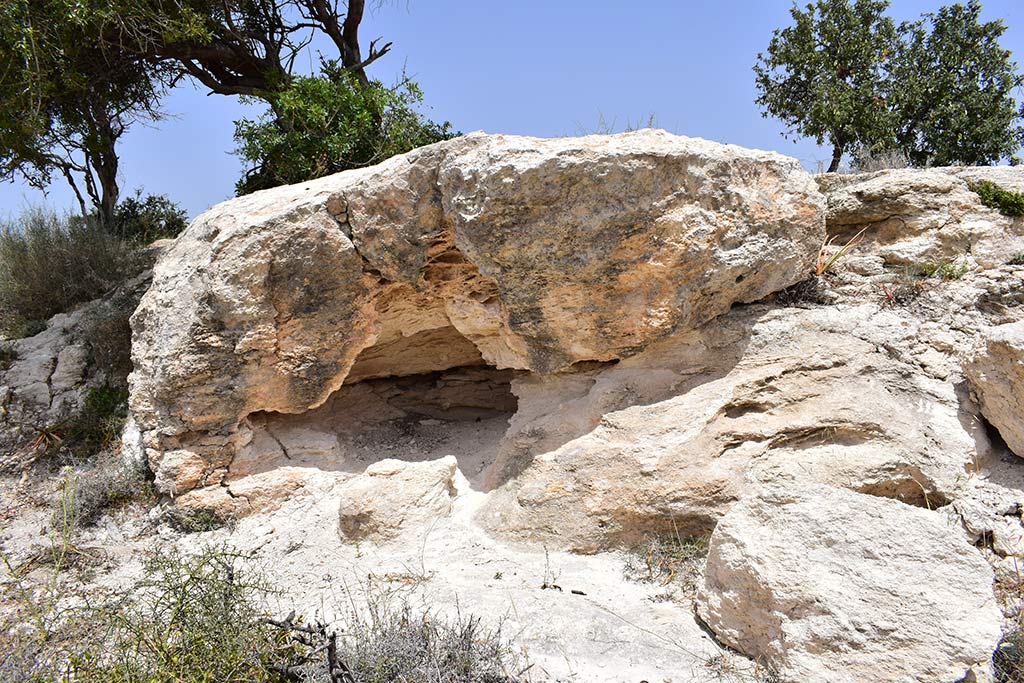
If like me you have no idea who the Chalcolithic People were, this will help:
Chalcolithic Europe, the Chalcolithic (also Aeneolithic, Copper Age) period of Prehistoric Europe, lasted roughly from 3500 to 1700 BC.
It was a period of Megalithic culture, the appearance of the first significant economic stratification, and probably the earliest presence of Indo-European speakers.
The economy of the Chalcolithic, even in the regions where copper was not yet used, was no longer that of peasant communities and tribes: some materials began to be produced in specific locations and distributed to wide regions. Mining of metal and stone was particularly developed in some areas, along with the processing of those materials into valuable goods.
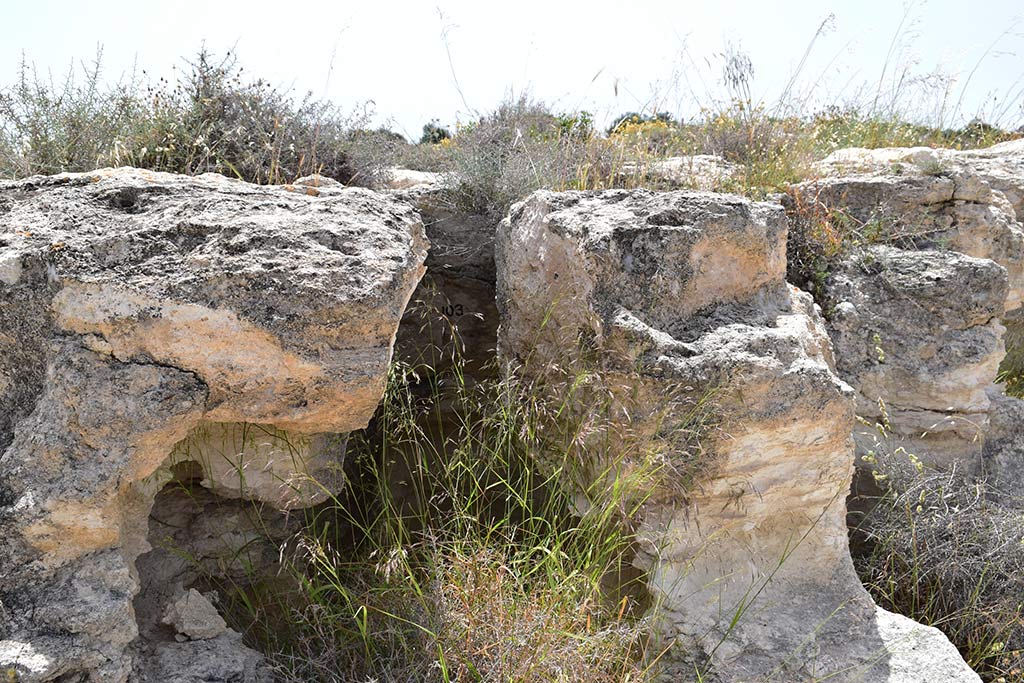
This is a side view of the raised stone area. Does this gap indicate that the area used to be bigger?
Now, going back to that definition on the previous page, we see that Chalcolithic People had learned how to make things in one place for use elsewhere. IE, they had factories. The archaeologists we met informed us that not only was there this cemetery here, but that there was also a settlement where they used to make things to put in graves.
Well, they used bigger words than that but I think that's what they meant.
A Handy Map
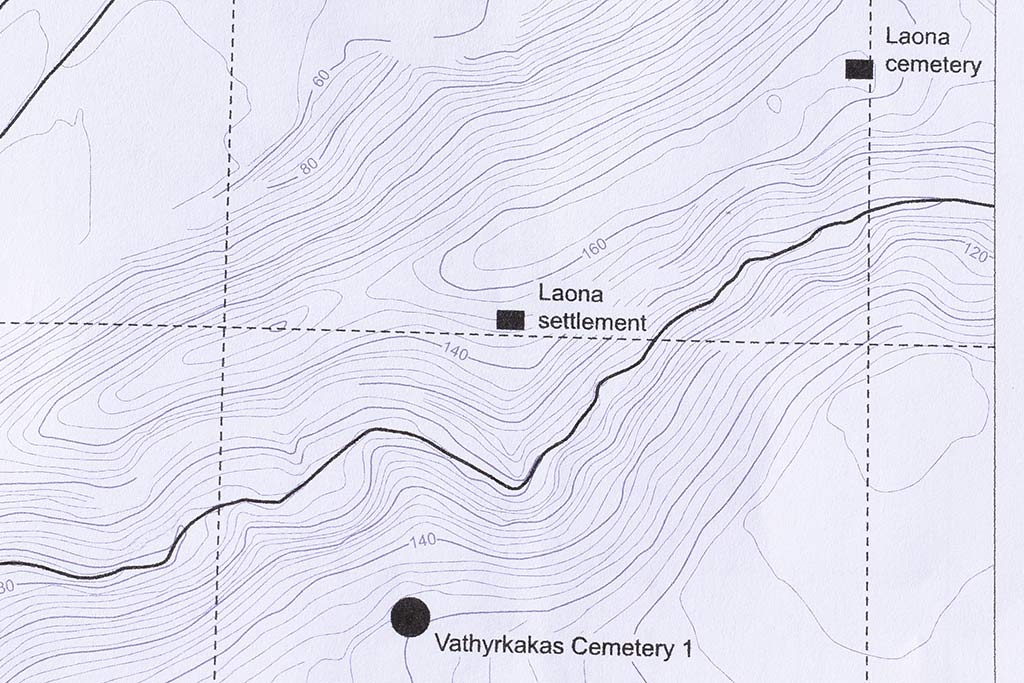
The archaeologists also showed us this map. We were currently standing by Laona Cemetery. Further along the ridge there was this settlement. Across the canyon was another cemetery.
So Let's Explore!
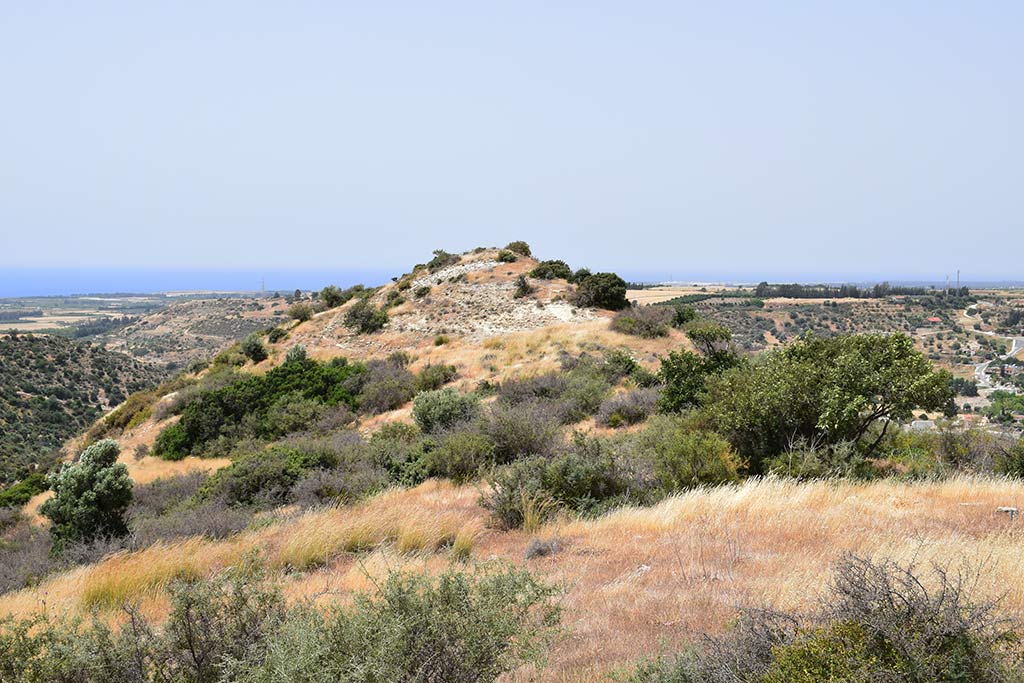
With that in mind, we set off looking for the old settlement. That hill looked promising...
Page 3 of 10


Related Blogs:
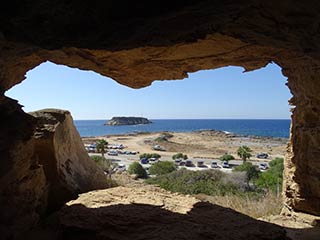
Cape Drepanum
It's time for another guest blog from Max. This time, he's been to the edge of the Akamas, to have a look at some of the caves at Cape Drepanum. Over to you, Max...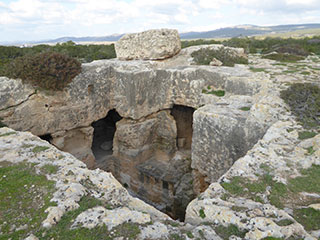
The Necropolis at Meletis Forest
If you drive to the Akamas along the coastal road, you will eventually come off the main road and onto a side road leading to the Akamas proper. Before you go past the Searays cafe bar, you will see a nondescript sign on your right, next to a layby.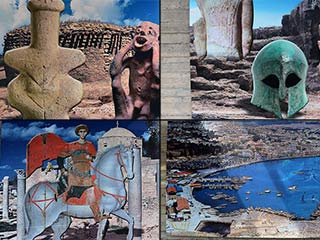
The History of Paphos in 16 Pictures
When I was out photographing a new statue in Old Paphos the other week, I stumbled upon a walkway I hadn't seen before. It descended to the lower carpark, by the Turkish Baths. The walkway was adorned with pictures telling the story of Paphos through the ages. Judging by the state of some of the pictures. they had obviously been there for some time, but this was the first I had seen of them. Here they are for your perusal...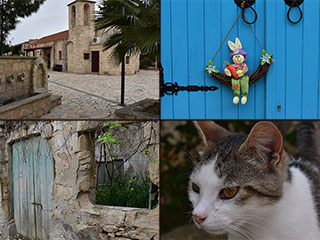
Pano Arodes
Pano Arodes is one of the gateways to the Akamas. It is a charming village between Kathikas and Droushia. We will be featuring it in our next eBook, so recently visited it to do some research. Naturally enough, we took lots of pictures while we were there...Good Pages To Visit
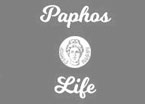
FB PagePaphos Life on Facebook
Like us on Facebook and stay notified of new blog posts.

FB PageOur Facebook Chat Group
Paphos Chat has been created for people who like our site and want to chat using Facebook. You can also easily upload photos of any size here. A lot of people are members of the Facebook chat group and the main forum. It's entirely up to you.
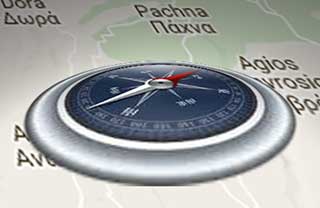
ListBlog Locations
Planning a day out? Then use our map of blog locations as a handy guide. Some of the places we visit our closer to each other than you might think, so take a look and start planning your next adventure...
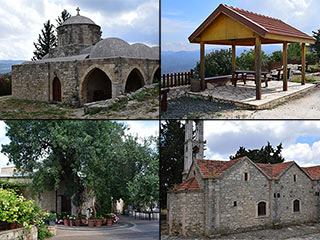
eBookCyprus Road Trip 01: the Kathikas - Panagia Loop
Let me take you on a journey around the region of Paphos, Cyprus. Starting at Paphos itself, we travel to Akoursos, then Kathikas, Kritou Terra and Simou. We continue past Lasa and Kannaviou, before taking in the delights of Panagia. Getting a bit more adventurous, we visit the abandoned villages of Statos and Agios Fotios, before passing through Choulou, Letymbou and Polemi, and rejoining the main Paphos - Polis road.
The route is suitable for all types of vehicle, and requires no off-roading. The guide contains about 130 photographs including shots of all the road signs you need to pay attention to, as well as some of the highlights you may experience along the way.
There are also several maps which will help you keep your bearings.
You can do this journey in a day, or you can break it up into chunks. You can also do it in reverse, to get some completely different views. It is entirely up to you.
